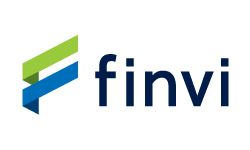Source: site

For much of its history, healthcare has presented a unique contrast in digital progress. While the sector leads in medical technology, healthcare billing and payments have frequently been slower to modernize.
“Healthcare billing is notoriously complex,” Paul Martin, VP and GM of Acquiring Partnerships at American Express (Amex), told PYMNTS. “It involves multiple parties — the patient, the provider, the insurance company, and sometimes others. And because of that complexity, many organizations, even large hospitals, still rely on legacy systems and manual payment processes.”
The persistence of those systems has long been seen as an unavoidable side effect of healthcare’s intricate structure.
But as patients bring behavioral expectations, shaped by intuitive payment experiences from their daily lives, into the waiting room, healthcare providers are discovering that payments modernization isn’t just a finance issue. Instead, it’s a patient experience and cash flow issue, and an increasingly competitive one.
“Consumers are accustomed to seamless digital payment experiences in other industries, and they expect that same convenience in healthcare. The good news is that adopting modern solutions doesn’t have to be overwhelming anymore,” Martin said.
Read more: A Dose of Digital: How Modernizing Payments Is Revitalizing Healthcare
Advertisement: Scroll to Continue
The Revenue Cycle Revolution
Unlike retail or hospitality, where a single transaction typically involves two parties, healthcare payments are a tangle of stakeholders. A single patient visit might generate invoices for lab tests, prescriptions and consultations, each processed through a separate system and paid for by different entities. Add in insurance pre-approvals, deductibles and co-pays, and the result is a maze of manual entries and reconciliation bottlenecks.
This can frequently delay revenue cycles and obscure cash flow visibility. A hospital that relies on paper invoices might wait 30 to 60 days for payment processing. Every printed bill and manual entry increases time and cost, inflating the administrative burden in a sector already stretched thin by labor shortages and rising operational expenses.
“Going digital not only supports patient payments; it also streamlines back-office payments,” Martin said. “It helps providers accelerate their revenue cycle, reduce administrative costs and gain real-time cash flow visibility. It allows organizations and their employees to focus on what truly matters: patient care, not paperwork.”
Digital reconciliation tools make it possible for providers to match incoming payments with outstanding invoices automatically, reducing the potential for human error and freeing finance teams to focus on strategic analysis rather than manual data entry.
Automated billing systems can issue invoices quickly, track their status in real time, and trigger follow-ups automatically. On the business-to-business (B2B) side, where payment volumes are vast, automation can also be transformative.
“The volume of B2B payments in healthcare is substantial,” said Martin. “That’s why efficiently tracking invoices and cash flow is as critical as ever.”
The Consumerization of Care
If the back office is the brain of healthcare finance, the patient experience is the heart. And today’s patients are no longer passive participants. They are digital consumers with strong opinions about convenience.
“For healthcare organizations, the message is clear,” said Martin. “Failing to offer modern payment options isn’t just a back-office issue. It’s a critical factor in patient retention and satisfaction.”
“Paying medical bills should be as simple as possible,” he added. “Patient expectations are evolving with new payment technology, and healthcare organizations need to stay agile by being well-informed of customer preferences and ready to integrate new innovations.”
Digital payments don’t just improve patient satisfaction; they create operational benefits, too. Automated billing systems, real-time notifications and direct deposit mechanisms reduce friction across the entire claims process. For patients, that means transparency. For providers, it means fewer errors, faster reimbursements and lower costs.
Credit cards remain the most popular payment method in healthcare, but the next phase of healthcare payments modernization may already be unfolding in the palm of the patient’s hand. Digital wallets are already ubiquitous in retail, and they are rapidly gaining traction in healthcare.
“Every organization can take advantage of these new technologies by first listening to what their customers want,” Martin said, citing research that found credit card, debit card, cash, and digital wallets are the four most popular healthcare payment methods. “Customers want a secure, convenient experience, and they want choice.”
Choice may be the ultimate differentiator in the healthcare economy of the future. As patients weigh both medical outcomes and digital convenience, providers that make payments a seamless part of the care experience, not an afterthought, will stand out.
“As newer payment innovations roll out, they’ll be easier to integrate into existing systems,” Martin said. “Staying open to new payment technologies can keep your organization positioned as the go-to healthcare provider by offering the best possible customer experience.”
Upcoming Events
Sign up for our newsletter
Sign up to get the latest news and updates about the industry, as well as announcements regarding upcoming conferences




